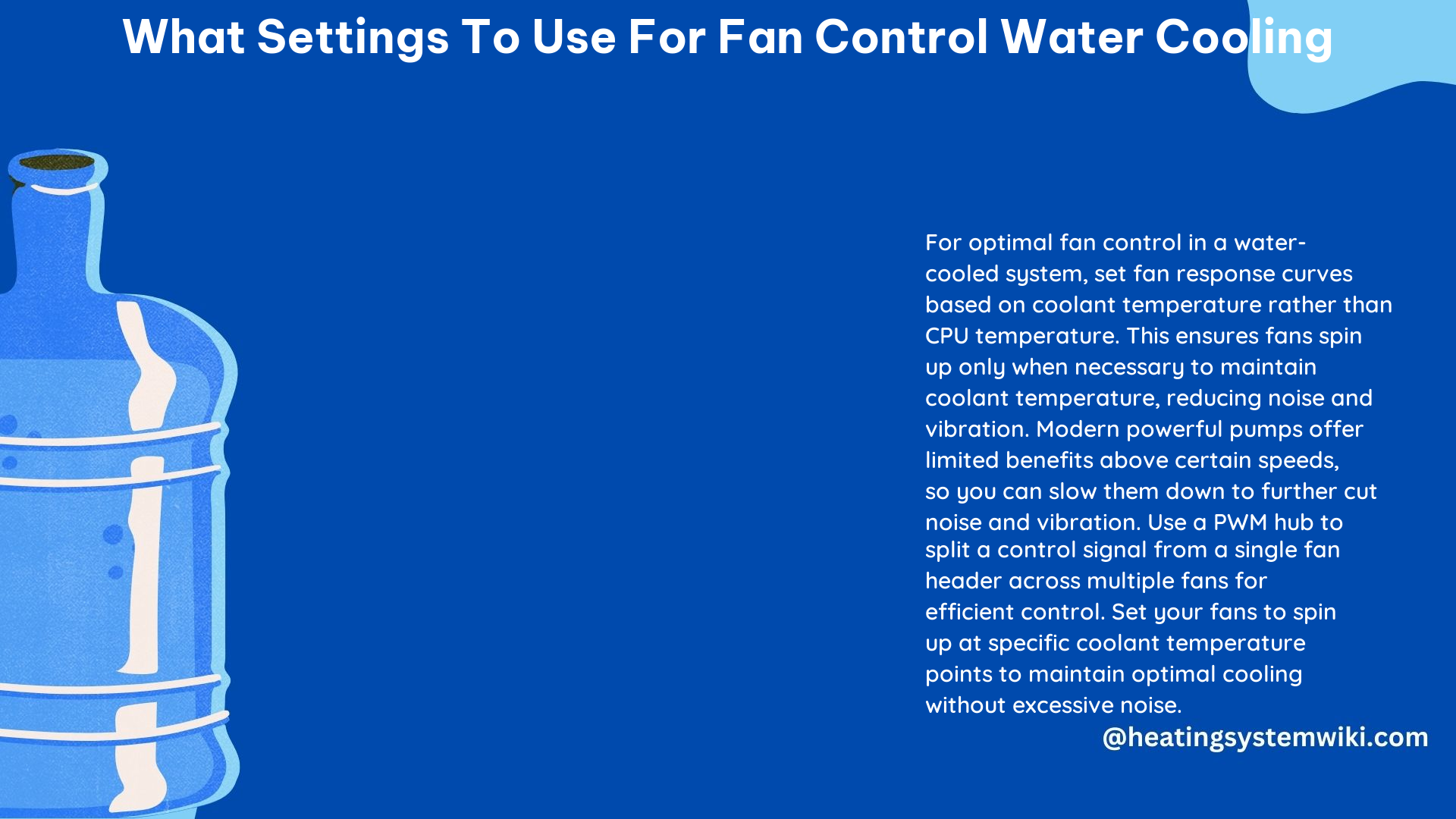When it comes to optimizing the performance and efficiency of a water-cooled system, the fan control settings play a crucial role. By carefully configuring the fan speeds and curves, you can ensure your system runs quietly while maintaining optimal temperatures for your components. In this comprehensive guide, we’ll dive deep into the technical specifications and best practices for fan control in water cooling setups.
Fan Headers: Ensuring Adequate Power Delivery
The first step in setting up your fan control is to ensure your motherboard has enough fan headers to support all the components in your water cooling loop. This includes not only the fans themselves but also the pump(s) and any additional accessories that require fan control. Some motherboards come equipped with dedicated water cooling headers that can handle higher wattage requirements, making them a preferred choice for advanced water cooling setups.
It’s important to note that the total power draw of your fans and pumps should not exceed the maximum rating of the fan headers. Exceeding this limit can lead to unstable operation, reduced performance, or even damage to the motherboard. Refer to your motherboard’s specifications to determine the maximum current and wattage supported by each fan header.
Crafting the Optimal Fan Curve

The fan curve is the heart of your fan control strategy, as it dictates how the fans will respond to changes in water temperature. The key to an effective fan curve is to base it on the water temperature rather than the CPU or GPU temperature. This is because the water in your loop is the primary heat sink, and its temperature is a more accurate representation of the overall system’s thermal state.
When designing your fan curve, start by identifying the ideal water temperature range for your setup. Typically, a range of 30°C to 40°C is considered optimal, as it balances cooling performance and noise levels. From there, you can plot the fan speed against the water temperature, ensuring the fans ramp up gradually as the water temperature rises.
Here’s an example fan curve that you can use as a starting point:
| Water Temperature (°C) | Fan Speed (%) |
|---|---|
| 30 | 30 |
| 35 | 60 |
| 40 | 90 |
| 45 | 100 |
Remember, the specific values in your fan curve will depend on the size and configuration of your water cooling loop, as well as the performance characteristics of your fans. It’s essential to stress test your system and fine-tune the curve to find the perfect balance between cooling efficiency and noise levels.
Optimizing Pump Speed
In addition to fan control, the speed of your water cooling pump(s) also plays a crucial role in the overall system performance and efficiency. Modern high-performance pumps often offer diminishing returns in cooling performance above a certain speed, so you can potentially reduce noise and vibration by slowing them down.
To find the optimal pump speed, start by putting your system under a heavy load and monitoring the water temperature. Gradually decrease the pump speed while observing the impact on the water temperature. Once you reach a point where the flow rate starts to have a noticeable effect on the temperature, increase the pump speed slightly to maintain the desired coolant temperature.
As a general guideline, most water cooling pumps can operate effectively at around 60-80% of their maximum speed without significantly impacting cooling performance. However, the exact optimal speed will depend on the specific pump model, the size of your water cooling loop, and the overall system load.
Choosing the Right Thermal Probe
Accurate temperature monitoring is essential for effective fan control, and the type of thermal probe you use can make a significant difference. There are two main types of thermal probes used in water cooling systems:
-
Pass-through Probes: These probes screw directly into a G1/4″ port in your water cooling components, such as the radiator or the reservoir. They have female threads on top, allowing you to connect them to your fan controller or motherboard.
-
Physical Probes: These probes use a long, thin physical sensor that can be placed directly in the coolant flow, often in a recessed area of the reservoir or a dedicated probe port.
When selecting a thermal probe, consider the available clearance in your system and the thread size of your water cooling components. Pass-through probes are generally easier to install and provide a more direct measurement of the coolant temperature, but they may not fit in tight spaces. Physical probes, on the other hand, can be placed in locations with limited clearance, but they may not provide as accurate a reading of the overall coolant temperature.
Proper Probe Installation
Once you’ve chosen the appropriate thermal probe, the next step is to ensure it is installed correctly. Start by identifying a suitable location for the probe, preferably in an area where the coolant is actively flowing, rather than a stagnant or recessed area of the reservoir.
Carefully screw the probe into the designated port, making sure the rubber O-ring creates a tight seal. This will help prevent any coolant leaks and ensure the probe is in direct contact with the moving fluid. Avoid placing the probe in areas where it may be obstructed by other components or tubing, as this can affect the accuracy of the temperature readings.
By following these best practices for fan control and temperature monitoring, you can optimize the performance and efficiency of your water-cooled system, ensuring your components stay cool and your system runs quietly under even the most demanding workloads.
